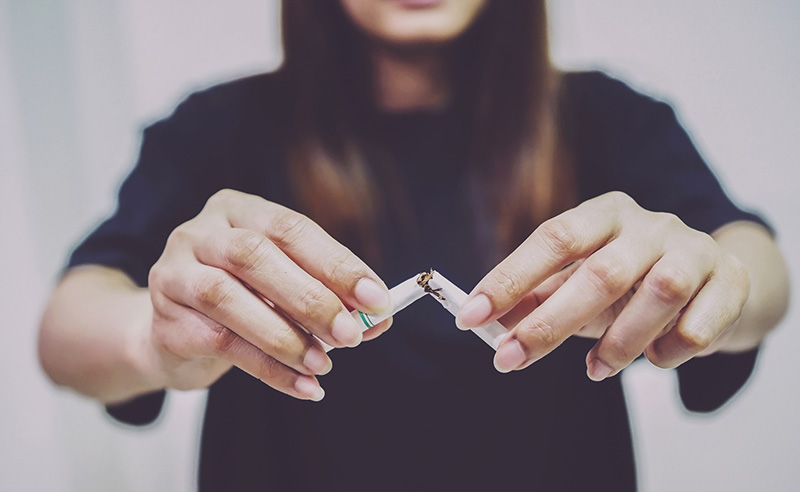Smoking and Heart Disease in Women

If you smoke, you’re likely aware that you’re not doing your body any favors. But you do it because you like to, and it gives you a rush. And even if you want to, it’s hard to give up.
Despite the reasons you enjoy smoking, the fact remains that you’re hurting your body. In fact, packs of cigarettes include labels that warn users about how the product can increase irritability, impatience, hostility, anxiety, depression, as well as cause difficulty concentrating, restlessness, decreased heart rate, appetite or weight gain. And that’s just the beginning.
Nicotine alters the balance of chemicals in your brain so that each time you inhale it, it makes you feel relaxed, less stressed and wanting more.
So, what happens when you try to cut back?
It makes you feel bad, hitting you hard with headaches, lethargy, lightheadedness and a downright lousy mood. Is it any wonder that so many people become addicted?
It’s time to listen to your heart.
What does smoking do to your body that puts you at risk for heart disease?
It may surprise you to learn that smoking increases the risk of heart disease and stroke by two to four times. Also, women who smoke have a 25% higher risk of developing heart disease compared to men who smoke. And continuing to smoke throughout your life can shave off 11 to 12 years. So, despite beliefs to the contrary, smoking doesn’t just cause a risk for lung cancer.
Here’s a look at how smoking damages your heart:
- Nicotine makes your heart rate and blood pressure increase or spike.
- Carbon monoxide, a harmful gas you inhale when you smoke, and tobacco rob your heart, brain and arteries of oxygen.
- It damages your blood vessels and makes your blood sticky — a recipe for blood clots.
- It lowers your tolerance for physical activity and decreases HDL (good) cholesterol.
- If you take oral contraceptives, it can increase your blood pressure and risk for stroke and heart attack.
Basically smoking damages every tissue and organ in your body. These include your heart, lungs, mouth, throat, kidneys, cervix and pancreas. And nonsmokers who have high blood pressure or high cholesterol have an even greater risk of developing heart disease when they’re exposed to secondhand smoke.
If that’s not enough, puff on this: There are more than 7,000 chemical components found in cigarettes and close to 100 of them are harmful to human health. We’re talking about chemicals used to manufacture rubber, preserve wood, make batteries, pave driveways and roads, and make nuclear reactors. That’s what’s going into your body every time you inhale. Still surprised it causes heart disease?
The good news is that when you stop smoking, your risk for heart disease and stroke goes down. Your risk can be cut in half just one year later and continues to decline until it’s as low as a nonsmoker’s risk.
It’s time to take action and fight for your health and the health of the women you love.
Learn how to quit smoking (PDF) and how to handle the stress of not smoking (PDF).






